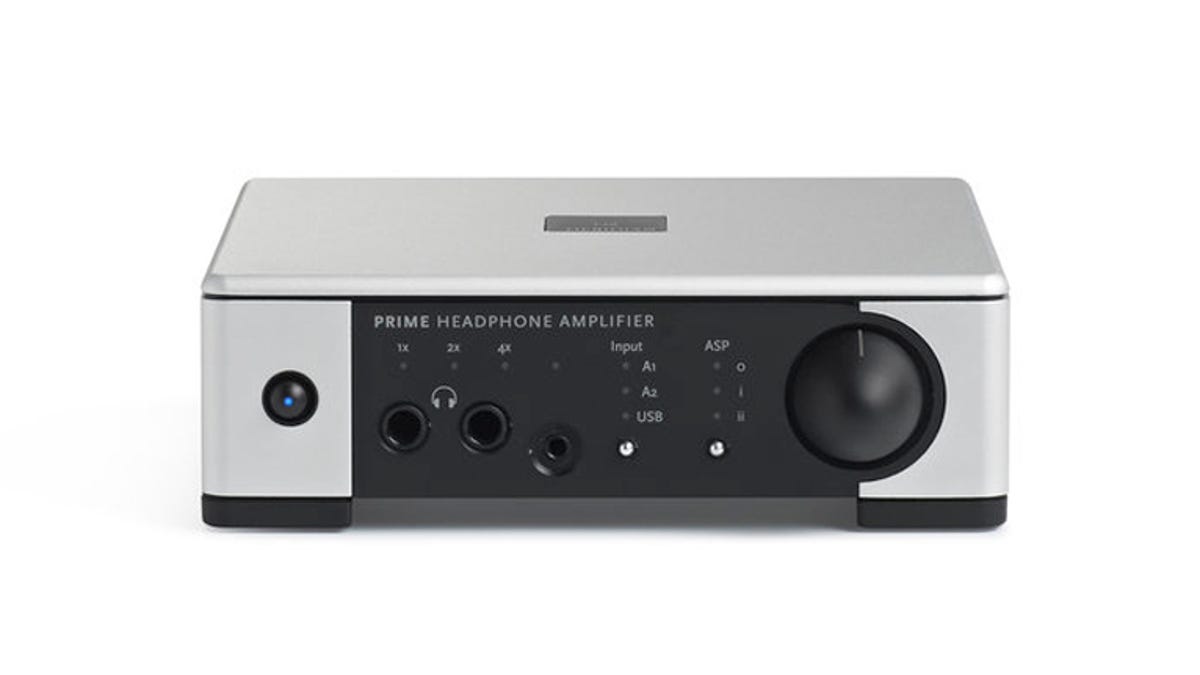How small can a bona fide high-end headphone amplifier be?
Meridian's new Prime desktop amp is seriously compact, and the sound is astonishing!

Meridian Audio may be one of Britain's oldest high-end audio brands. It was founded in the late 1970s, but it was always exploring new technologies. It introduced the world's first high-end CD player in 1984, advanced the state of the art in self-powered speakers, and pioneered digital loudspeakers. The company also developed the lossless compression technology used in many Blu-ray Discs.
So when I heard Meridian was introducing a high-end headphone amplifier, I immediately requested a review sample. When the box arrived, I thought they had sent the wrong piece, it was too small to be a contender, but the Meridian Prime is a good deal more compact than the competition's models. It's also a stunning piece of industrial design. The 6.3x2x5.9-inch all-metal chassis is gorgeous and a desktop-friendly size; fit and finish are what you'd expect from a high-end brand. The front panel hosts two 6.3mm jacks for full-size headphones, plus a 3.5mm jack for in-ear headphones, while the back panel sports a USB input, stereo RCA analog inputs, and outputs that can drive self-powered desktop speakers. The Prime is made in England.
Meridian and Bryston are the only two established high-end brands making headphone amplifiers. Unfortunately, I didn't have the Bryston BHA-1 amp on hand to compare, but the BHA-1 is just an amp, the Prime has an onboard USB digital converter that handles up to 24-bit/192KHz digital audio. The Prime can be run with the included wall wart, or from your computer's USB port. There's also an optional upgraded power supply that's the same size and sports the same look as the Prime chassis.
With my Audeze LCD-3 headphones I compared the Prime with my old Red Wine Audio Corvina headphone amp. The Prime's clarity and detail resolution on Moby's "Play" CD far outpaced the Corvina's. The sound was more transparent; the Corvina's tonal balance was richer, warmer, and sweeter, but the Prime's more immediate, you-are-there sound won me over. The Prime has an Analogue Spatial Processing feature that ever so gently expands the stereo soundstage; I found it worked well on some recordings, but others sounded better with the processing turned off.
HiFiMan's EF-6 headphone amp produced a weightier sound on Bob Marley's "In Dub" CD on my Sennheiser HD 700 headphones. The Prime was more open- and spacious-sounding but couldn't summon the subterranean bass lines that rolled so effortlessly out of the EF-6.
Switching over to my favorite pairs of in-ear headphones, the JH Audio JH13 and Shure SE846, the EF-6's background noise/hiss levels were audible, but the Prime was dead quiet. Its superior resolution makes it ideal for use with in-ear headphones; dynamic impact and bass oomph and definition were state-of-the-art for in-ear headphones.
The Prime's long suit is its see-through clarity: you feel like there's nothing between your ears and the recording. Of course, the quality of the headphones plays a role, so it doesn't make sense to consider buying the Prime if you don't already own great headphones. Invest first in the best headphones you can afford, and then start looking into amps.
The Prime couldn't play my hard-to-drive HiFiMan HE-6 and Audeze LCD-3 headphones as loud as I would have liked. The EF-6's sound is a lot more powerful and dynamically alive. The optional power supply did make a difference overall, but the Prime didn't sound more powerful than it did with the included wall-wart supply.
The Meridian Prime sells for $2,000, while the optional power supply runs $1,250.

